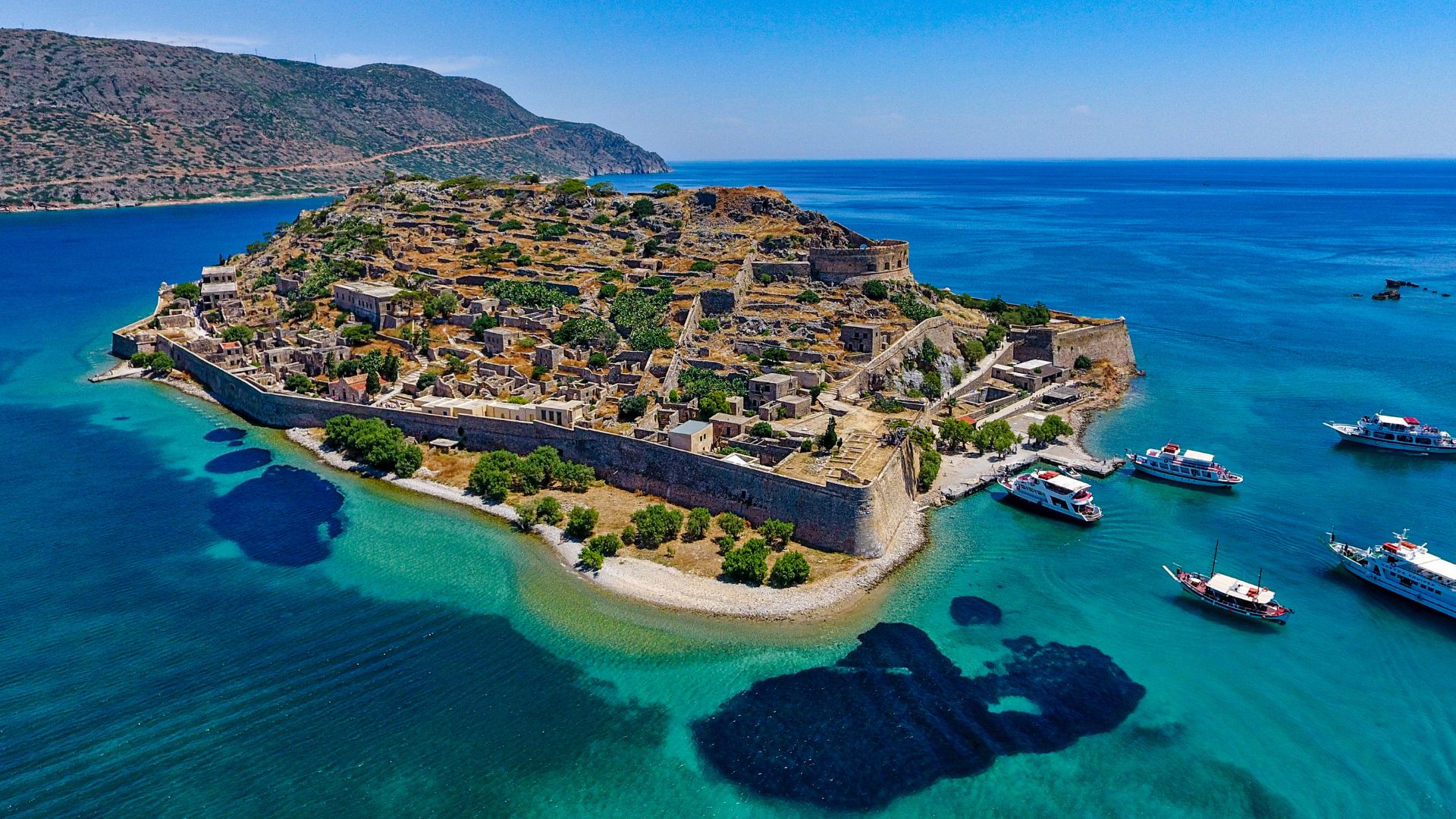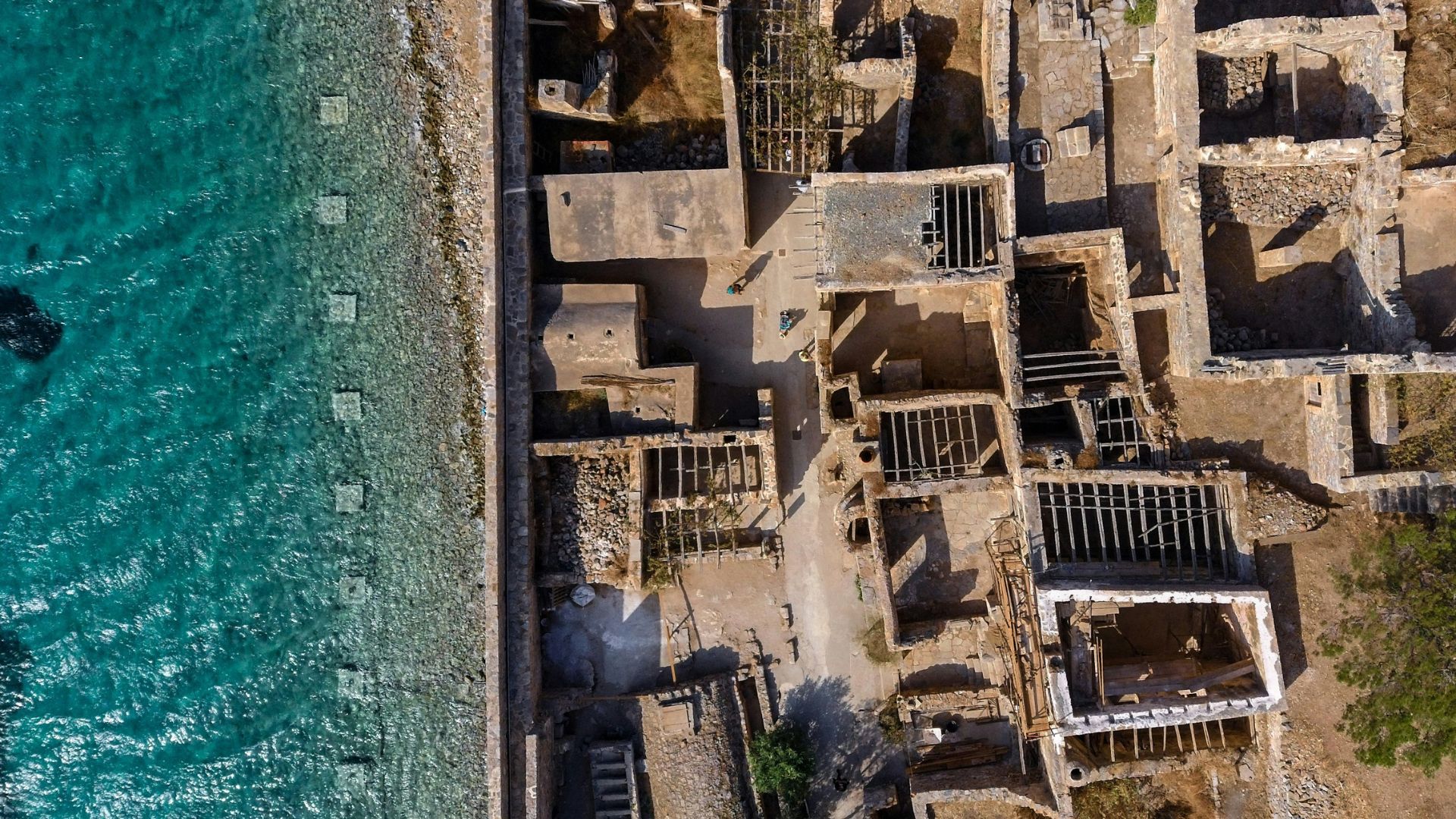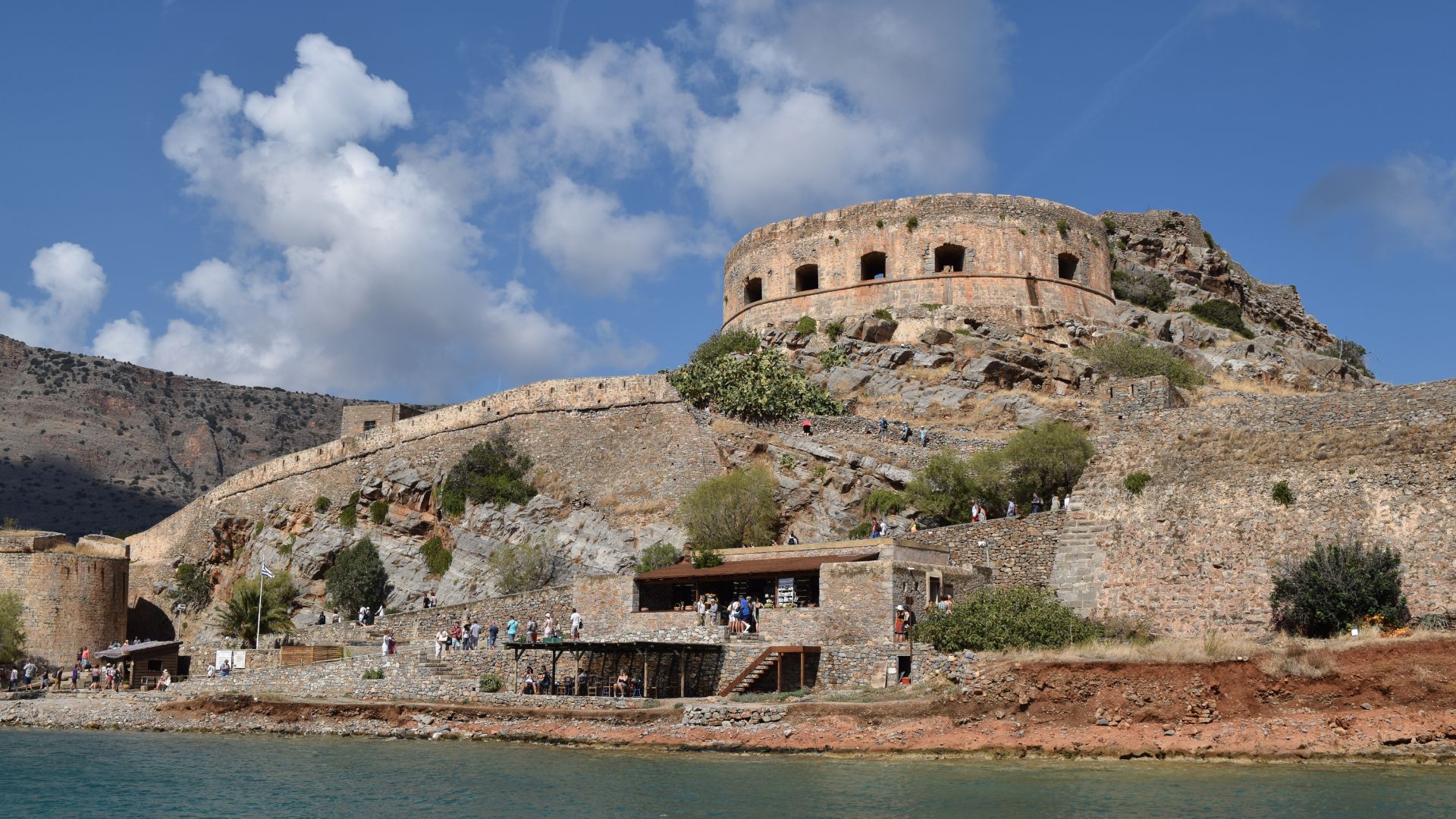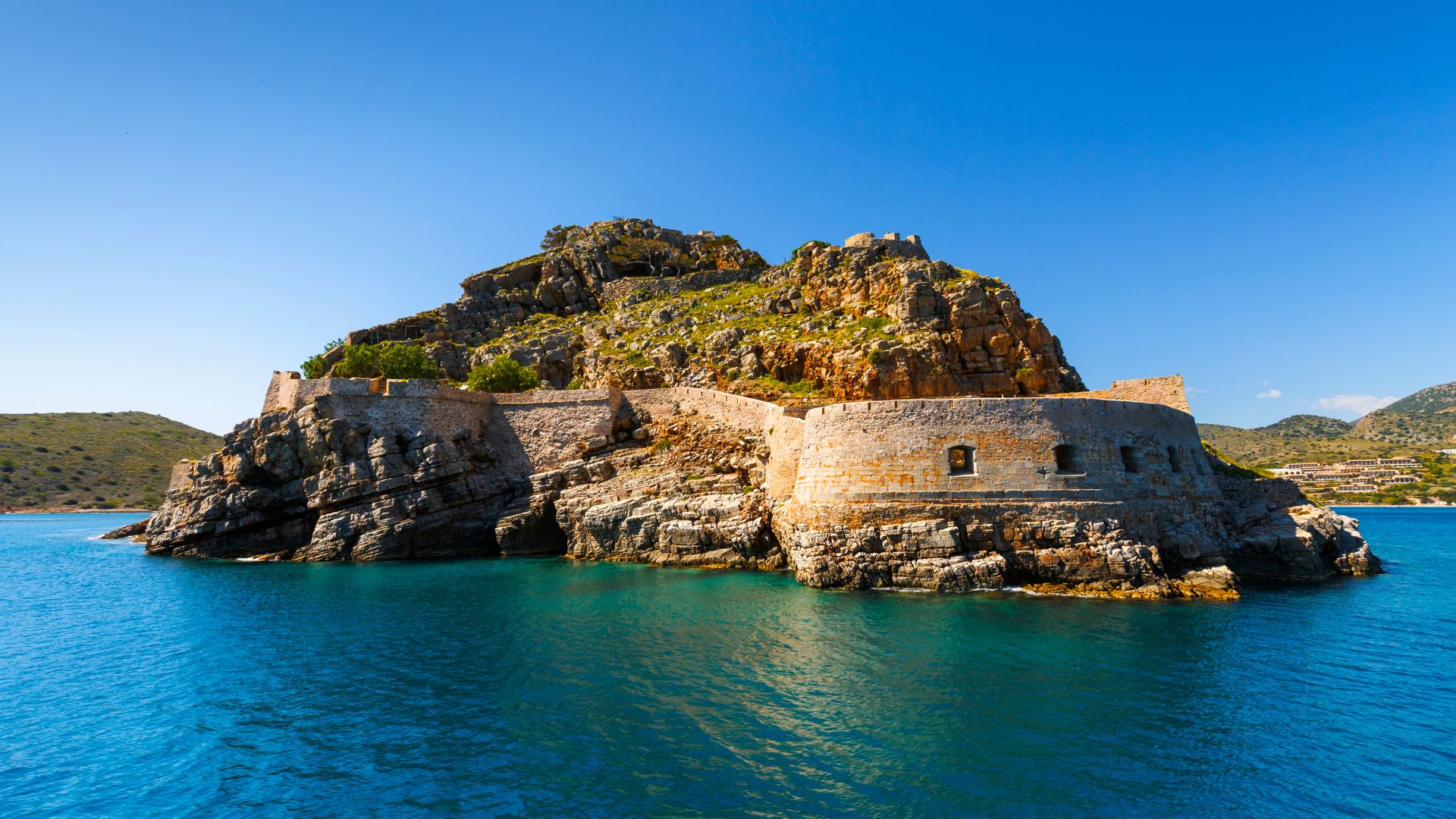There’s something unforgettable about strolling along Spinalonga’s Venetian walls, perched on a rocky islet near Crete in Greece. The sun presses against my shoulders, and the Mediterranean blue seems endless as I follow the sturdy stone paths where invaders, settlers, and outcasts once walked.
When I walk these ancient walls, I step right into centuries of stories—feeling echoes of a past that just won’t disappear.
The sharp lines of the Venetian fortifications tower above, and each turn opens up new views of the sparkling sea and distant mountains. History feels close here.
I can almost picture Venetian guards at their posts and everyday life inside the fortress. Later, everything changed when Spinalonga became a leper colony.
If you’re curious about Greek history or just want a striking travel experience near Crete, these walls offer much more than a typical stroll. Every step whispers of survival, memory, and resilience.

The Allure of Spinalonga: A Gateway to Crete’s Venetian Past
Spinalonga sits just off Crete’s coast, its story tangled up with Venetian rule and the wider Aegean world. Exploring its ancient walls and legends gave me a fresh sense of why travelers just keep coming back.
Where Venetian Walls Meet Aegean Waters
When I walk along Spinalonga’s stone walls, I see how the Venetians built them for both power and protection. The fortress rises right from the rocky edge, almost dipping into the blue-green Aegean.
Every spot along the ramparts gives you sweeping scenes of Crete’s coastline and the glittering bays below. Those thick parapets and sturdy bastions weren’t just decoration—they guarded Venetian trade routes across the Greek islands.
There’s a real connection between these ancient stones and the quiet lapping of the sea below. Standing here, I feel like I’m inside a living memory, with echoes of centuries-old footsteps all around.
Visitors today can walk these same circular paths, tracing both the power of Venetian engineering and the vulnerability of an island shaped by so many hands.

Why Spinalonga Captivates Travelers and Historians
Spinalonga stands out from other Aegean islands because of its layered past. Under Venetian rule in the 16th and 17th centuries, it was the last big Venetian fortress on Crete.
Its walls held out against invaders long after the rest of Crete fell. That sense of resilience leaves a mark.
But it’s not just about wartime history. Spinalonga became a leper colony from 1903 to 1957. The abandoned homes and hospital ruins stand as stark reminders of how the island’s purpose shifted.
Historians dig up endless stories here. I just felt something simple but powerful: Spinalonga forces you to look at both beauty and hardship up close. Maybe that’s exactly what draws so many people in.
Legends and Myths Surrounding the Island
As I wandered, local guides shared tales passed down for generations. Some stories blend Venetian and Greek folklore.
People whisper about hidden treasures left by fleeing Venetians, and ghosts that drift through old stone corridors. One myth claims a Venetian commander’s spirit still paces the walls on stormy nights, guarding the island from forgotten enemies.
Another legend tells of healing waters around Spinalonga, drawing visitors in even during the hardest years as a leper colony. These myths don’t just entertain—they add layers of mystery and wonder.
Whether you believe them or not, hearing these tales as the wind stirs along the ramparts adds something special to every step across Spinalonga.

Venetian Fortifications: Walking Through Layers of History
As I walk the walls of Spinalonga, each stone seems to echo centuries of conflict and change. The island’s fortifications were built to protect, to resist, and eventually, to transform under new rulers.
Engineering the Fortress: Stones, Strategies, and Stories
I run my hand across weathered stone blocks and realize the engineering is just as impressive as the views. The Venetians started fortifying Spinalonga in 1578.
They picked the island’s highest points for blockhouses and wrapped them with thick, tall walls. From above, the walls form a kind of shield, almost hugging the island.
Lookout towers stand ready to spot trouble. The fortifications aren’t flashy, but they work.
Archaeologists say the walls have barely budged over centuries, standing almost as they did in Venetian times. Exploring these layers now, I see that each section tells a part of the island’s story—one of careful planning and urgent need.

Defending Against Pirates and the Ottoman Empire
Safety was never a sure thing. The Mediterranean swarmed with pirates and rival empires.
Under Venetian rule, Spinalonga became a final line of defense for Crete’s coast. I could really feel that while gazing out at the water from those battlements.
Ships often approached—some friendly, others searching for weak spots. The walls made quick surprise attacks tough.
The Venetians built cannon platforms and strong gates. Supplies could still get through, but enemies met dead ends and high parapets.
Surviving sieges became part of life. The fort resisted the Ottoman Empire for decades longer than most Cretan sites, finally surrendering in the early 18th century.
Records show Spinalonga’s defenses slowed the Ottoman advance and helped protect Venetian interests in the region.
Transformation Under Ottoman Rule
When the Ottomans finally took Spinalonga, the island changed, but the walls stayed put. They patched up damage, reused Venetian structures, and added things like barracks and storehouses.
Daily life shifted; Greek and Turkish influences mixed with the old Venetian stonework. I notice different carving marks, new doors, and repairs—clear signs of ongoing adaptation.
Spinalonga kept its military role, but now under Ottoman watch. Today, archaeologists study these layers to piece together the island’s past.
Each addition marks a rise and fall: Venetian, then Ottoman. Walking here, I sense that constant change—reminders that history keeps getting rewritten by those who walk these walls.

Echoes Across Time: People, Culture, and Commerce on Spinalonga
When I walk Spinalonga’s Venetian walls, I spot traces of everyday life, lively trade, and shifting purpose that still shape the island’s feel. Spinalonga’s layered history—Greek and Venetian—reveals bustling streets, busy trade, and dramatic change from colony to tourist site.
Everyday Life Inside the Walls
Inside Spinalonga’s walls, I imagine neighbors meeting in narrow lanes. Homes hug the winding paths, their courtyards tangled with vines and olive trees.
People’s days revolve around fishing, collecting water, and tending small gardens behind stone houses. Families share simple meals under whitewashed arches.
I spot handmade pottery and textiles—marks of Greek culture—still left behind. Religion mattered too, with several small churches offering hope and community.
Life wasn’t always easy. The island’s small space meant noise and chatter filled the air. But little cafes and bakeries brought comfort.
Festivals, especially religious ones, brought everyone together, blending Venetian touches with Greek tradition.

Role of Spinalonga in Mediterranean Trade
Spinalonga’s spot on Crete’s eastern coast made it a valuable stop for ships. Merchants brought olive oil, local wine, and cheese for trade.
The Venetian walls, built for defense, also watched over busy docks where goods moved in and out. I can still sense the importance of commerce here.
Sailors from Egypt, Cyprus, and Venice visited the island. Money changed hands daily as Spinalonga’s safety made it a hot spot for business.
As a hub, Spinalonga linked Crete to the wider Mediterranean. Supplies from other Greek islands didn’t just support life—they made Spinalonga a lively trading point, shaping the flow of goods through the region.
Greek Merchants and International Relations
Greek merchants played a big role in Spinalonga’s story. Families ran shops right inside the walls, selling spices, fabrics, and local crafts.
They chatted with travelers in all sorts of languages, making friendships and deals that crossed borders.
Here’s a quick look at Spinalonga’s key connections:
| Country | Good Traded | Relation Type |
|---|---|---|
| Venice | Wine, Oil, Textiles | Trade, Defense |
| Egypt | Grains, Gold | Trade |
| Cyprus | Dried Fruits | Trade |
Politics and power often shaped trade deals. When the Venetians left and Ottomans took over, merchants adapted fast, reaching out to new partners.
These experiences shaped international relations, turning Spinalonga into a meeting place for ideas from Greece and beyond.

Influence of Major Events: From Leprosy Colony to Modern Tourism
One of the most powerful reminders of Spinalonga’s changing role is its leprosy colony history. From 1903 to 1957, the island became a place of exile and hope for people with Hansen’s disease.
Patients brought their own customs, building a new kind of community in tough times. I spot buildings that once held clinics and family quarters.
As medicine advanced, the colony eventually closed and Spinalonga grew quiet—until its past started attracting travelers.
Today, Spinalonga draws visitors curious about its many histories—Venetian, Ottoman, Greek, and medical. Hotels and resorts on Crete often suggest day trips here.
Tourism now brings money and new connections, helping the island share its stories with the world.
Modern Pilgrimage: Experiencing Spinalonga’s Atmosphere Today
Visiting Spinalonga feels like a mix of emotional reflection and discovery. Walking the Venetian walls, exploring quiet corners, and sampling local life, I notice the island’s past and present tangled together in vivid detail.
Practical Travel Tips for Visiting
I usually grab a short boat ride from Elounda or Plaka to reach Spinalonga. Boats run every half hour in summer, but lines get long in July and August, so I try to book early in the morning.
When I visit, I always bring water, sunscreen, and a hat—the sun on the island can be relentless, and there’s barely any shade. Spinalonga doesn’t have hotels or resorts on the island itself.
Most travelers, including me, stay in Elounda or Agios Nikolaos, where there’s a good range of budget and luxury stays. Tickets to the island are sold at the small port, and I’ve learned to carry a little cash since not every vendor takes cards.
Comfortable shoes are a must; the stone paths and Venetian walls can be uneven in places.

Guided Walks and Self-Discovery
You can explore Spinalonga in two ways: join a guided tour or just wander on your own.
Local guides lead tours and share stories about the old leper colony, the quarantine hospital, and the Venetian fortress.
Once, I joined a guided walk and picked up details I would’ve missed—like poetry and names scratched into the walls by people who once lived there.
Exploring alone feels quieter and more personal.
Sometimes I pause on the ramparts, just soaking in the sea view and letting the weight of history settle in.
I usually bring a small map, but honestly, I end up letting my feet decide where I go.
I’ve stumbled into empty courtyards or cool stone alcoves that way, perfect for a bit of reflection.
Both guided tours and solo wandering show different sides of the island’s story.
Savoring Local Flavors: Restaurants and Beaches
After leaving Spinalonga, I always look forward to a meal back on the mainland.
Plaka village, right by the dock, is my favorite spot.
The tavernas serve up fresh seafood and cold drinks.
One morning, after a hike, I celebrated with grilled octopus and tomato salad at a seaside restaurant.
Tables sit right by the water, so I can watch boats drift in and out while I eat.
Spinalonga itself doesn’t have restaurants or resorts, but the mainland beaches are just steps from the boat landings.
If I want a quieter spot, I’ll walk down the coast and find a pebbled cove for a swim.
Some hotels in Elounda even have their own sandy stretches and waterside dining, which makes it easy to relax after a day exploring the island.

Wildlife and Natural Beauty of the Island
Spinalonga always surprises me with its wild beauty.
Low scrub, olive trees, and wildflowers grow among the old stones, especially in spring.
Lizards dart across the rocks, and birds wheel overhead, filling the air with sound.
If I visit during the quieter months, I watch for migratory birds.
The sea around the island looks crystal clear.
Sometimes I see schools of fish flickering close to shore.
There isn’t an official wildlife reserve here, but you can feel nature slowly reclaiming the ruins.
I like to stand still for a moment, listening to the wind and looking past the stone walls to the open bay.
It’s a living landscape, shaped by both human history and nature.

Spinalonga in Greek and Global Imagination
When I walk along Spinalonga’s Venetian walls, I can’t help but notice how this small island shapes not just local stories but even world history.
Its past links to ancient sites and keeps inspiring literature, art, and the Western imagination.
Spinalonga in Historical Literature and Art
Spinalonga’s story stretches across centuries, from Venetian chronicles to modern novels.
I’ve read Venetian historians who describe the island as more than just a fortress—it became a stage for hope and hardship during battles and occupations.
The leper colony years show up in Greek poetry and memoirs, especially in the haunting verses of C.P. Cavafy.
His poems make me think about how isolation and dignity can exist side by side.
Artists love to paint Spinalonga’s dramatic landscape, focusing on the weathered stone walls and that shimmering sea.
When I’m out photographing the ruins, I often spot painters and writers sketching, trying to capture the feeling of resilience that seems to linger here.
Comparisons with Ancient Sites: Athens to Naxos
Spinalonga isn’t as grand as the Acropolis in Athens or the Parthenon.
But when I walk here, I feel connected to the bigger story of Greek endurance.
The Parthenon stands for glory and democracy, while Spinalonga’s walls tell stories of struggle and everyday life shaped by larger forces.
Unlike the mythic ruins at Delphi, Mycenae, or Naxos, Spinalonga’s story doesn’t stretch back to ancient Greece.
Still, its layered history helps me understand how this region has changed.
Just as travelers look for meaning at Epidauros or Naxos, plenty come to Spinalonga to reflect on survival, exile, and belonging—ideas that still matter now.
Its Lasting Influence on Western Civilization
The more I dig into Spinalonga, the more I notice its impact on Western thought, especially in how people treat outsiders and the sick.
Back in the 20th century, the island’s leper colony stood out as a symbol in European debates about public health, compassion, and human rights. That legacy comes from both the Enlightenment and the twists of modern Greek history.
Spinalonga pops up in textbooks and documentaries that talk about the shift from exclusion to empathy in Western civilization. Honestly, I find these lessons just as meaningful as anything I pick up during an Acropolis tour.
Whenever I share stories about Spinalonga, I feel like its spirit forces us to look at our own choices about care and justice.


